Best Mardi Himal Trek Cost in 2025: A Detailed Budget Breakdown
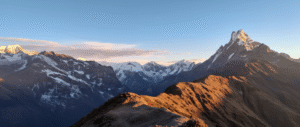
Mardi Himal Trek Cost in 2025 /2026: The Ultimate Budget Guide
Nestled in the Annapurna region, the Mardi Himal trek is Nepal’s hidden gem for travelers seeking breathtaking mountain views without the crowds or high price tag of Everest or Annapurna Base Camp. Rising to 4,530 meters at Mardi Himal Base Camp, this trail offers 360-degree panoramas of Machhapuchhre (Fishtail), Annapurna South, and Hiunchuli — all on a budget that won’t break the bank.
But exactly how much does the Mardi Himal trek cost in 2025? Whether you’re a frugal backpacker, a mid-range explorer, or someone who prefers a guided experience, this guide provides the most detailed, up-to-date, and realistic cost breakdown available online. We’ve included everything: permits, transport, food, accommodation, guide fees, and even the price of a hot shower at 3,500 meters.
By the end, you’ll know precisely how to plan your budget — and how to save money without sacrificing safety or experience.
Quick Cost Summary: Mardi Himal Trek Budgets (2025)
| Travel Style | Duration | Total Estimated Cost (USD) | Includes |
|---|---|---|---|
| Budget Backpacker (DIY) | 5–6 days | $180 – $250 | Permits, local transport, teahouse stays, basic meals |
| Mid-Range (With Guide) | 6–7 days | $350 – $500 | + Licensed guide, better meals, buffer days |
| Guided Tour Package | 6–8 days | $550 – $800+ | + All-inclusive: transport, guide, porter, meals, permits |
All prices are per person, in USD, and exclude international flights. Updated for 2025 inflation and tourism trends.
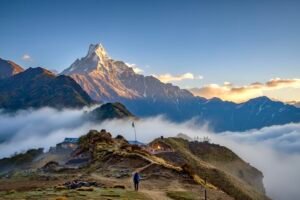
Detailed Cost Breakdown: Every Rupee Explained
1. Permits: Mandatory & Affordable
Two permits are required, both obtainable in Kathmandu or Pokhara:
- Annapurna Conservation Area Permit (ACAP): NPR 3,000 (~$23)
- TIMS Card (Individual Trekkers): NPR 2,000 (~$15)
Total: ~$38 USD. No special Mardi Himal permit is needed — it’s open to all nationalities.
2. Transportation: From City to Trailhead
- Kathmandu → Pokhara:
- Tourist Bus (Greenline, Volvo): $12–$15 (7–8 hrs)
- Flight (Yeti, Buddha Air): $100–$130 (25 mins)
- Pokhara → Trailhead:
- Local Bus to Kande: $1–$2 (1.5 hrs)
- Shared Jeep to Phedi: $4–$6 (1 hr, smoother start)
- Private Taxi: $25–$35 (ideal for groups of 3–4)
Budget Total (Bus + Shared Jeep): ~$18
3. Guide & Porter: Optional but Strategic
You can trek solo — the trail is well-marked. But a guide adds safety, cultural insight, and navigation confidence, especially in fog or snow.
- Guide: $25–$30/day
- Porter: $20–$25/day (carries 15–20 kg)
- Guide-Porter: $30–$35/day (best value)
✅ Tip: Hire through a registered agency in Pokhara for insurance and reliability.
4. Accommodation: Teahouse Prices by Elevation
Basic but clean rooms with shared bathrooms. Prices rise with altitude due to supply costs:
- Forest Camp (2,500m): $3–$5/night
- Low Camp (2,900m): $5–$7/night
- High Camp (3,550m): $8–$12/night
- Base Camp (4,530m): No teahouses — return to High Camp same day
🔥 Hot showers: $2–$4 (solar-powered, limited above 3,000m)
5. Food & Water: Eat Smart, Save Big
Meals are simple Nepali or Tibetan fare. Prices increase 20–50% above 3,000m:
- Dal Bhat (unlimited refills): $4–$7
- Breakfast (eggs, toast, pancakes): $2–$4
- Noodles, momo, pasta: $3–$6
- Tea/coffee: $1–$2
- Bottled water: $1 (Phedi) → $3 (High Camp)
💧 Save $15+: Carry a water filter or purification tablets. Free spring water is available at all teahouses.
6. Miscellaneous Costs
- Wi-Fi: $1–$3/day (unreliable above Low Camp)
- Phone charging: $1–$2/device
- Tips: $5–$10/day (optional but appreciated)
- Snacks (chocolate, nuts): $10–$15 (buy in Pokhara!)
Sample 6-Day Itinerary with Full Budget (Mid-Range)
- Day 1: Pokhara → Phedi → Forest Camp ($20: transport + food + stay)
- Day 2: Forest Camp → Low Camp ($15)
- Day 3: Low Camp → High Camp ($20: incl. hot shower)
- Day 4: High Camp → Base Camp → Back to Low Camp ($18)
- Day 5: Low Camp → Australian Camp → Pokhara ($12)
- Day 6: Buffer/relax in Pokhara ($10)
Subtotal (food + stay + extras): ~$95
+ Permits ($38) + Transport ($18) + Guide ($180 for 6 days) = Total: ~$331
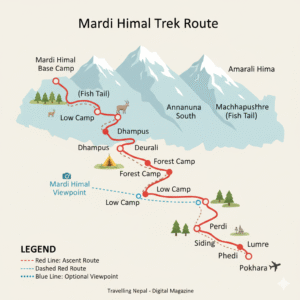
Iconic Machapuchare (Fishtail) mountain
15 Essential FAQs: Everything You Need to Know
1. What is the total Mardi Himal trek cost for a solo traveler in 2025?
A solo backpacker can complete the trek for $180–$250, including all permits, local transport, basic teahouse stays, and meals for 5–6 days. This assumes no guide, self-catering, and using public transport.
2. Can I do the Mardi Himal trek without a guide?
Yes! The trail is well-marked with red/white blazes and prayer flags. Many solo trekkers complete it safely, especially during peak seasons (March–April, October–November). However, a guide is recommended for first-timers, winter treks, or if you lack navigation experience.
3. How much does a teahouse cost on the Mardi Himal trek?
Teahouse prices range from $3–$5/night at lower elevations (Forest Camp) to $8–$12/night at High Camp (3,550m). Rooms are basic with shared bathrooms. Blankets are provided, but a sleeping bag is recommended above 3,000m.
4. What’s the best time for the Mardi Himal trek?
The best months are October–November (clear skies, stable weather, great visibility) and March–April (mild temps, rhododendron blooms). December–February is cold but possible (snow above 3,500m). Avoid June–September (monsoon: leeches, landslides, fog).
5. How difficult is the Mardi Himal trek?
It’s a moderate to challenging trek. The trail is steep in sections (especially Day 1 from Kande), and you’ll gain over 1,000 meters in a single day. Good physical fitness is required, but no technical climbing or prior trekking experience is needed.
6. How do I get from Pokhara to the Mardi Himal trailhead?
The two main starting points are Kande and Phedi. From Pokhara:
– Local bus to Kande: $1–$2 (1.5 hrs)
– Shared jeep to Phedi: $4–$6 (1 hr)
Phedi is preferred — it saves 2–3 hours of steep uphill walking.
7. What are the Mardi Himal permit costs in 2025?
You need two permits:
– ACAP: NPR 3,000 (~$23)
– TIMS (Individual): NPR 2,000 (~$15)
Total:~$38 USD. Obtain them in Kathmandu (Bhrikutimandap) or Pokhara (Near Mahendrapul) with your passport and 2 photos.
8. Is the Mardi Himal trek safe for solo female travelers?
Yes, it’s considered one of Nepal’s safer treks for solo women. The trail is frequented by international trekkers, and teahouses are family-run. Always inform someone of your itinerary, avoid night hiking, and trust your instincts.
9. How many days do I need for the Mardi Himal trek?
The standard itinerary is 5–7 days. A 5-day trek is doable but rushed. A 6–7 day schedule allows for acclimatization, rest, and better views. Add a buffer day for weather delays.
10. Do I need travel insurance for the Mardi Himal trek?
Yes. Ensure your policy covers trekking up to 4,500m and includes emergency helicopter evacuation. World Nomads, SafetyWing, and IMG are popular choices among trekkers.
11. Can I charge my phone and camera on the trek?
Yes, but it costs $1–$2 per device. Power comes from solar panels, so charging is slow and limited above Low Camp. Carry a power bank for backup.
12. Is Wi-Fi available on the Mardi Himal trek?
Limited Wi-Fi is available at Forest Camp and Low Camp for $1–$3/day, but it’s slow and unreliable. Don’t count on it for navigation or communication. Download offline maps before you go.
13. What should I pack for the Mardi Himal trek?
Essentials: sturdy hiking boots, warm layers (down jacket for mornings), rain jacket, sleeping bag (comfort to -5°C), headlamp, water purifier, first-aid kit, and snacks. Trekking poles are helpful for steep descents.
14. Are there ATMs or money exchange on the trek?
No. Withdraw all cash in Pokhara before you start. Teahouses only accept Nepali Rupees (NPR). Carry small bills for tips and extras.
15. How does the Mardi Himal trek compare to Annapurna Base Camp (ABC) in cost?
Mardi Himal is 30–40% cheaper than ABC. ABC takes 10–12 days and costs $300–$600+, while Mardi Himal delivers similar views in half the time and budget. It’s ideal for travelers with limited time or funds.
Final Tips for a Perfect (and Affordable) Trek
- Start from Phedi — not Kande — to save energy.
- Carry cash in small denominations (NPR 100, 500 notes).
- Book your Pokhara hotel near Lakeside — most trekking agencies are there.
- Respect local culture — dress modestly, ask before photographing people.
- Leave no trace — pack out all trash, even biodegradable items.
Adventure Doesn’t Have to Be Expensive
With a realistic budget of under $250, the Mardi Himal trek offers one of the world’s most rewarding high-altitude experiences. You’ll trade crowds for solitude, luxury for authenticity, and expense for pure Himalayan magic.
Plan wisely, pack light, and let the mountains move you — without moving your bank balance too much.
Have questions? Drop them below! We help hundreds of trekkers plan their Nepal adventures every month.
Share this content:
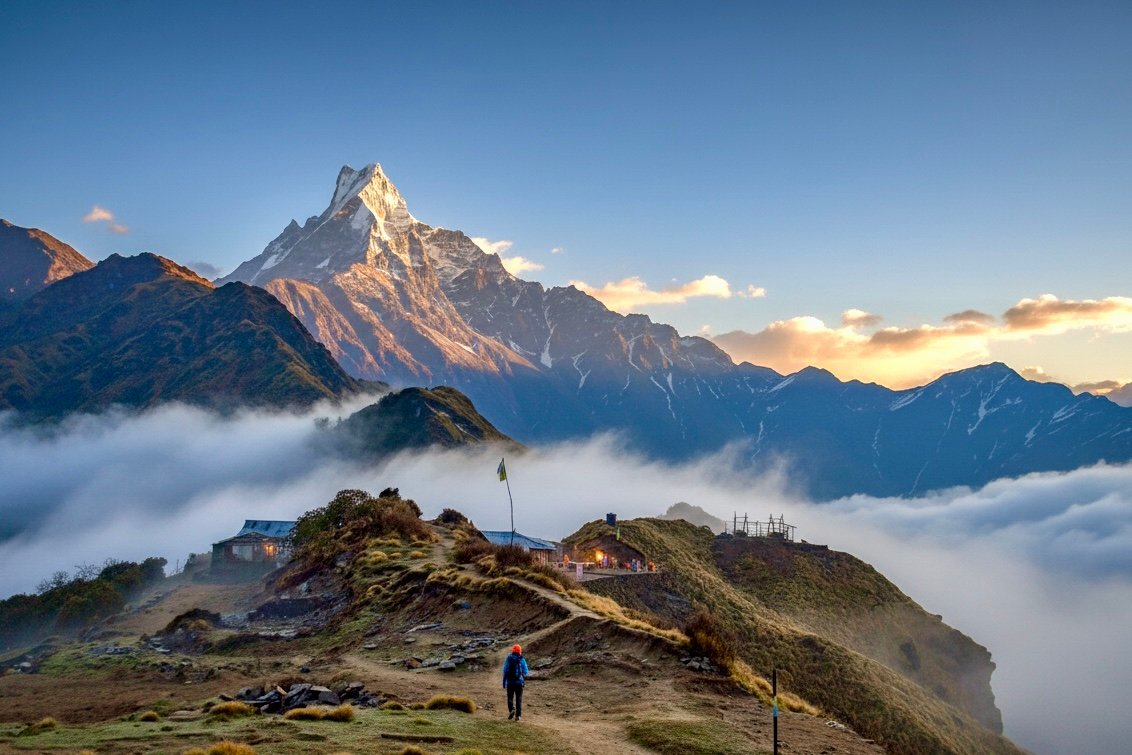



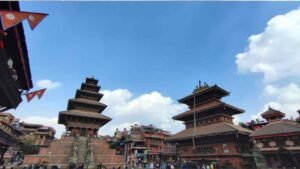
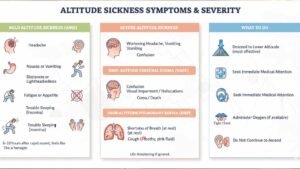
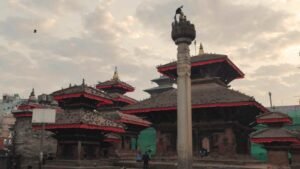
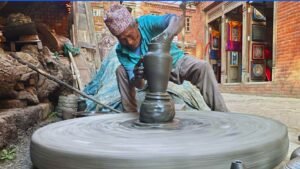
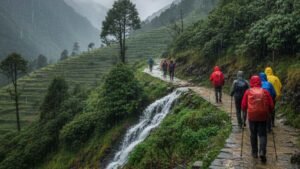
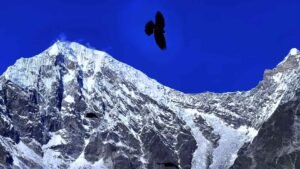
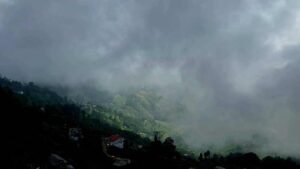

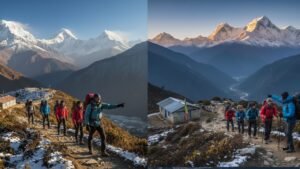

Post Comment